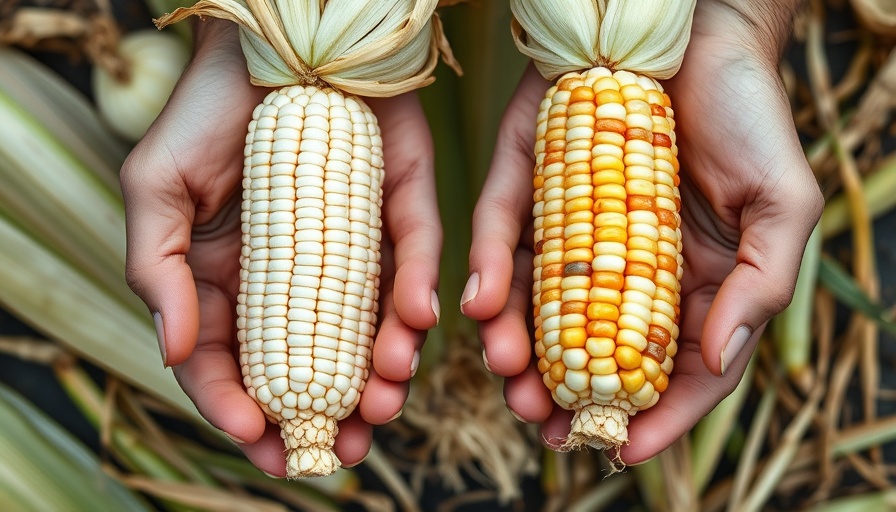
The Joy of Growing Sweet Corn
Sweet corn is a beloved staple in gardens across America, not just for its delicious taste but also for the joy it brings to home gardeners. Few things are as satisfying as picking a fresh ear of corn from your backyard, where it has ripened and grown just for you. However, as many gardeners know all too well, occasionally the experience can fall short when you uncover underdeveloped corn cobs that fail to meet expectations.
While enjoying the sunshine of summer, it’s important to cultivate your corn crop correctly to yield sweet, delectable ears that are often the stars of summer meals. To understand how to nurture these plants effectively, let’s explore some common causes behind underdeveloped corn cobs and how to remedy them.
Finding the Right Sunlight
One of the foremost requirements for sweet corn to flourish is sunlight—specifically, at least six hours of direct sunlight each day. Insufficient exposure may lead your corn to stretch for light, ultimately resulting in weaker stalks and cob development. When your garden is too shaded—by trees, fences, or other structures—your corn may suffer. Take the time to assess your planting area and ensure that the crops receive ample sunlight to support their growth and development.
The Temperature Tango: Heat and Cold Stress
Whether it’s the heat of summer or the chill of spring, corn’s development is significantly impacted by temperature. Corn can face threats from both extremes: excessive heat can lead to energy conservation strategies within the plant, resulting in smaller, underdeveloped cobs, while cold, wet conditions stifle growth during crucial developmental phases, leading to fewer or unfilled kernels.
Pay attention to the weather, and if you know a heat wave is in the forecast, proactive measures such as mulching and adequate watering can help crops cope. Conversely, be cautious about planting too early in cool soil, as this can hinder germination and crop success.
Pollination: The Key to Perfect Kernels
Pollination is a delicate dance that corn requires—one that can easily be disrupted. Healthy kernels are the result of successful pollination; underdeveloped cobs often stem from insufficient pollination during the critical silk stage when the silks must interact with pollen to form kernels. This process can be stifled by temperature extremes or insufficient airflow.
One solution may be to plant corn in blocks rather than rows, which encourages better pollination through increased pollen transfer among plants. Ensuring that you plant multiple varieties that mature around the same time can also enhance the likelihood of successful and ample pollination.
Water and Nutrition: The Unexpected Misses
Just as in any growing endeavor, ensuring that corn receives adequate water and nutrition is crucial. If the plants are not watered consistently or become drought-stressed, they may allocate resources to surviving rather than thriving. Under-nutrition due to poor soil practices can similarly hinder healthy growth.
Consider using a balanced fertilizer and adhering to a consistent watering schedule throughout the growing season, especially during critical periods of development. Adding organic matter to your soil, such as compost or well-rotted manure, can greatly sustain nutrient availability as your plants grow.
Community Takeaway
Ultimately, growing a successful crop of sweet corn connects us with the earth and our local community. Sharing tips and insights with fellow gardening enthusiasts can not only enrich your experience but can also foster a community spirit focused on sustainable backyard gardening practices. Embrace the little hiccups as opportunities to learn, and don’t hesitate to share your family’s gardening stories with neighbors!
Kitchen Inspiration: Cooking with Your Corn Harvest
After overcoming the challenges of underdeveloped corn, the reward is finally there: fresh, sweet corn ready for the table. Think about adding corn to salads, using it in salsas, or simply enjoying it boiled or grilled for a summer meal that everyone will love.
If you’re looking to elevate your outdoor kitchen designs, think about incorporating garden elements into meal prep with seasonal dishes that feature your homegrown corn. Make your summer gatherings even more enjoyable!
For more tips on backyard makeover ideas, outdoor kitchen designs, and container gardening, visit our website.
 Add Row
Add Row  Add
Add 




Write A Comment